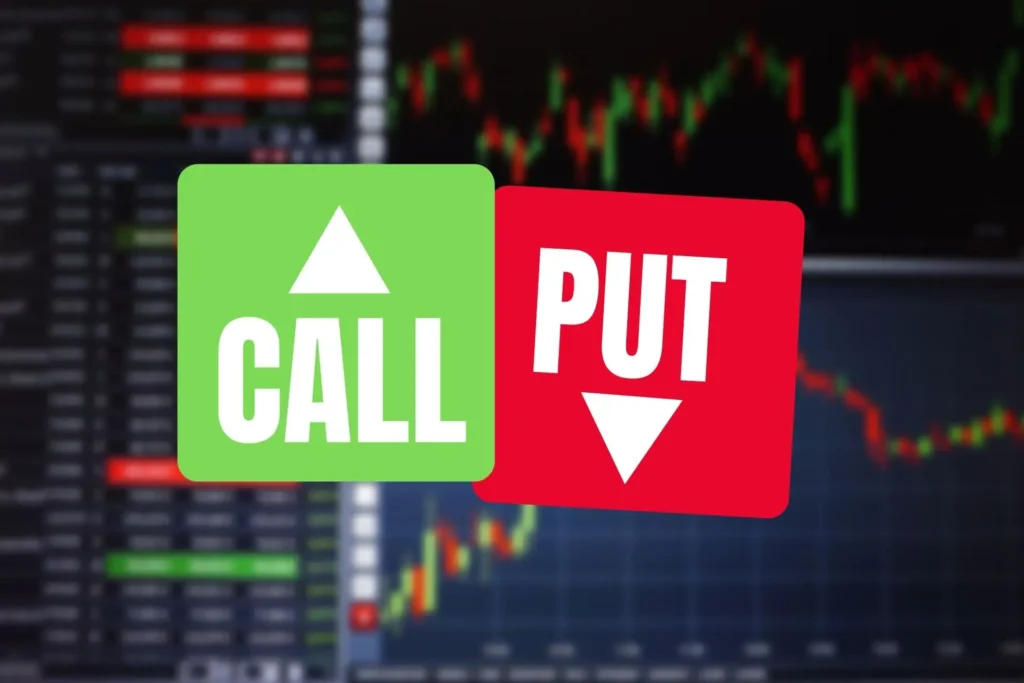Types of Crypto Trading: Strategies and Platforms Explained
Written by Stephen Wedge
Stephen Wedge, with over 15 years of experience in finance, holds a Master of Science in Finance from Vanderbilt University's Owen Graduate School of Management. He specializes in financial analysis, strategic investment planning, and has a keen interest in the world of cryptocurrencies. With a deep understanding of both traditional and digital financial markets, Stephen offers valuable expertise to investors seeking to navigate the complexities of crypto investments.
Expert Reviewed
This article has been reviewed by crypto market experts at SCM to ensure all the content, sources, and claims adhere to the highest standards of accuracy and reliability.
Last Updated on November 22, 2025
Types Of Trading In Cryptocurrency
#1. Crypto Spot Trading

Crypto spot trading is the foundational form of trading within the cryptocurrency market. Here, you deal directly with the asset in question, buying or selling immediate ownership of digital currencies like Bitcoin at their current market prices.
When you engage in spot trading, your transactions are settled “on the spot.” This means the trades are executed instantly or within a concise time frame after placing the order.
The main objective is to purchase an asset like Bitcoin at a lower price and sell it at a higher price, securing a profit from the price difference.
For instance, if you buy 1 Bitcoin at $30,000 and sell it at $35,000, you earn a profit of $5,000, excluding transaction fees. It’s a straightforward strategy:
- Buy Order: You can place an order to buy Bitcoin at the current market price. This is known as a ‘market order.’
- Sell Order: Conversely, you can execute a ‘sell order’ to dispose of your Bitcoin at market price, hopefully higher than your purchase price.
Key Points to Remember:
- Trades are often executed immediately.
- You own the actual assets you trade.
- The focus is typically on short-term price movements.
In contrast to other trading forms like futures or options, spot trading doesn’t involve leverage or borrowing. Your capital backs your trades.
| Advantages | Disadvantages |
|---|---|
| Immediate ownership | Full asset exposure |
| Simple to understand | Without leverage, profits are limited to actual price movement |
| No expiration date | Susceptible to market volatility |
Your trading strategy and risk tolerance will determine whether spot trading aligns with your investment goals. Understanding the market conditions and timing your trades can optimize your trading results in the volatile crypto market.
#2. Crypto Futures Trading

Crypto futures trading is a financial contract where you agree to buy or sell a cryptocurrency at a predetermined future date and price. This method allows you to speculate on the price movement of cryptocurrencies such as Bitcoin.
Example: Imagine Bitcoin is currently priced at $50,000. You predict the price will rise and decide to enter a futures contract to buy one Bitcoin at $52,000 in one month. If Bitcoin’s market price is indeed higher at the contract’s expiration, say $55,000, you will benefit from the price difference.
There are two types of settlements in crypto futures:
- Physically settled: You would receive the actual Bitcoin upon the contract’s expiration if you’re in an extended position.
- Cash-settled: You would settle the profit or loss in cash without owning the actual Bitcoin.
When trading futures:
- Long Position – Buy if you anticipate the price will go up.
- Short Position – Sell if you expect the price to drop.
Leverage enables you to trade more significant amounts with less capital. However, be aware that leverage can amplify both gains and losses.
Risks include market volatility and the potential for liquidation if the market moves against your position. Using stop-loss orders can help mitigate losses. Always ensure you have adequate margin and collateral to maintain your positions.
#3. Crypto Leverage Trading

Leverage trading in cryptocurrency markets allows you to increase your exposure to price movements without committing the total value of the position. Leverage is the ability to control a significant currency with a comparatively small amount of capital.
How it Works:
- You deposit a margin, a fraction of the total value of your trade.
- The broker loans you the rest.
- The ratio of borrowed money to margin is known as the leverage ratio.
Example with Bitcoin:
Suppose Bitcoin is priced at $20,000. You want to purchase 1 BTC, but you only have $2,000.
- You opt for 10:1 leverage.
- You open a position with your $2,000; this is 10% of the total price.
- You now control 1 BTC.
Benefits:
- Greater potential returns: Your gains can be significantly amplified.
- Capital efficiency: You’re able to use your capital elsewhere.
Risks:
- Amplified losses: Just as gains are amplified, so are losses.
- Margin calls: If the market moves against you, you may need to add additional funds.
Risk Management:
- Stop-loss orders: Automatically sell assets at a preset price to manage potential losses.
- Constant monitoring: Stay updated with market changes and your positions.
#4. Crypto Options Trading

In cryptocurrency trading, options are powerful tools that offer flexibility and a method to manage risk. Like traditional financial options, trading crypto with options gives you the right, but not the obligation, to buy (call option) or sell (put option) a specific cryptocurrency at a predetermined price, known as the strike price, within a set period.
Example of Bitcoin Call Option:
You buy a Bitcoin call option with a strike price of $40,000 that expires in one month. If Bitcoin’s market price rises above $40,000, you can exercise your option to buy at the lower strike price, potentially earning a profit based on the difference.
| Type | Right | Obligation | Direction of Market Belief |
|---|---|---|---|
| Call | To buy | No | Bullish (Price Rise) |
| Put | To sell | No | Bearish (Price Fall) |
Crypto options can be utilized in various strategies:
- Covered Calls: Sell call options on a cryptocurrency you own.
- Protective Puts: Buy put options for cryptocurrencies you own to hedge against potential losses.
- Spreads: Combine various call and put options at different strike prices.
Like trading the underlying cryptocurrency, options trading involves significant risk and is best conducted with a thorough understanding. Always use risk management practices and consider starting with a reputable trading platform.
#5. Crypto Copy Trading
Crypto copy trading is a strategy where you replicate the trading actions of experienced investors in the cryptocurrency market. Through this method, you automatically copy trades from a selected trader’s portfolio. It’s beneficial if you’re a beginner or lack the time to monitor the market constantly.
For example, if you choose to copy a trader who primarily trades in Bitcoin:
- Your Portfolio: When the trader you’re copying buys or sells Bitcoin, your account will automatically execute the same trade in proportion to your allocated funds.
- Risk Management: You can set loss limits to manage risk while copy trading.
How to Get Started:
- Choose a Platform: EToro, Bybit, and Binance are among the favorites for crypto copy trading in 2025.
- Select a Trader to Copy: Look for a trader with a consistent track record and a strategy that aligns with your risk tolerance.
- Allocate Funds: Decide the amount you will invest in copying the trader’s moves.
- Monitor and Adjust: Monitor your investments and adjust your settings as necessary.
Benefits:
- Time-Saving: It saves you time as you don’t need to conduct your extensive research or constantly watch the markets.
- Learning Opportunity: Gain insights into expert trading techniques and market analysis.
Considerations:
- Risk: All trading carries risk, and past performance does not indicate future results.
- Control: You’ll have less direct control over individual trades, as actions are automatically mirrored.
#6. Crypto Day Trading
Crypto-day trading involves buying and selling digital currencies such as Bitcoin within the same day. Your goal is to capitalize on the short-term price movements to earn a profit.
For instance, if Bitcoin opens the day at $30,000 and you predict it will rise based on your analysis, you may buy in the morning and sell when it reaches $30,500, securing a profit.
Critical Components of Crypto Day Trading:
- Technical Analysis: Utilize charts and indicators to predict future price movements of Bitcoin.
- Liquidity: Ensure that Bitcoin, or any other cryptocurrency you trade, has sufficient liquidity for easy entry and exit.
- Volatility: Be prepared for the rapid price changes that Bitcoin can experience within a single day.
- Risk Management: Set a stop-loss to minimize potential losses if the market moves against your position.
Basic Day Trading Strategy:
- Identify the Trend: Look at the price movement of Bitcoin to determine the current trend.
- Entry Point: Find an optimal entry point using indicators like moving averages or MACD.
- Exit Point: Establish a clear exit strategy, whether a target price or a specific time of day.
- Trade Management: Monitor the trade actively, adjusting your stop-loss or taking profits as necessary.
#7. Crypto P2P Trading

Peer-to-peer (P2P) crypto trading is a decentralized approach. With P2P, you can buy and sell cryptocurrencies directly with other users.
Unlike traditional trading on centralized exchanges, P2P platforms connect you to others looking to trade crypto. They often include an escrow service to secure the transaction.
How It Works:
- You start by locating a P2P exchange that supports the cryptocurrency you are interested in, say Bitcoin.
- You register and complete any necessary verification (KYC) processes.
- Once verified, you can respond to an existing offer or create your listing.
- Your listing specifies the amount of Bitcoin you wish to buy or sell and your preferred payment method.
- The Bitcoin is temporarily held in escrow when a match is found, and the terms are agreed upon.
- Payment is made, and once confirmed, the Bitcoin is released from escrow to the buyer.
Advantages:
- Flexibility in payment methods: You can typically choose from various payment methods.
- More control: You set the terms of your transaction.
- Privacy: Reduced need for centralized third parties.
Security Tips:
- Ensure you understand the platform’s security features and reputation.
- Use platforms that offer robust escrow services.
- Always confirm transaction details and the identity of your trading partner.
#8. Crypto OTC Trading
Over-the-counter (OTC) cryptocurrency trading allows you to buy and sell digital assets, such as Bitcoin, directly with another party. This type of trading typically takes place outside of centralized exchanges. It offers greater privacy and potentially lower market impact for large transactions.
Critical Characteristics of OTC Crypto Trading:
- Privacy: Your trades are not broadcasted publicly, so there’s less chance of affecting market prices significantly with large orders.
- Flexibility: You can negotiate prices directly, often resulting in better rates for high-volume trades.
- Accessibility: OTC markets can provide access to liquidity even when traditional exchanges are not operational.
Let’s consider an example using Bitcoin. If you wish to purchase 1,000 BTC, a significant amount that might influence the open market price if placed on an exchange, an OTC trade would allow you to find a seller and agree on a fixed price for the entire lot, often through an OTC broker.
OTC Trading Process:
- Engagement: You initiate contact with an OTC broker or trading desk.
- Quotation: The broker provides a quote for the desired quantity of Bitcoin.
- Agreement: You and the seller agree on the price and trade terms.
- Transaction: Funds and Bitcoins are exchanged, typically using an escrow service.
OTC crypto trading provides a discrete and effective method for trading large volumes of digital assets like Bitcoin. It reduces the risk of market disruption and maintains confidentiality.
#9. Crypto Arbitrage Trading
Crypto arbitrage trading is about capitalizing on price discrepancies of cryptocurrencies like Bitcoin across various exchanges. When you engage in arbitrage, you’re buying a cryptocurrency on one exchange where the price is lower and simultaneously selling it on another where the price is higher.
How It Works: An Example with Bitcoin
- Identify Price Differences:
- You find that Bitcoin is trading for $40,000 on Exchange A.
- On Exchange B, it’s trading for $40,200.
- Quick Action:
- You buy 1 Bitcoin on Exchange A for $40,000.
- Then, you immediately sell the identical Bitcoin on Exchange B for $40,200.
- Profit Calculation:
- Your profit is the price difference minus any transaction fees.
- Assume a $10 fee on each exchange; your net profit is $180.
Types of Crypto Arbitrage:
- Simple Arbitrage: Buying and selling the same asset on different exchanges.
- Triangular Arbitrage: Involves three different cryptocurrencies and trades on a single exchange.
- Convergence Arbitrage: You anticipate that the price of an asset on different exchanges will eventually converge.
Risks & Considerations:
- Arbitrage opportunities can be fleeting due to market efficiency.
- You must account for transaction fees, transfer times, and operational risks.
-
Conclusion
You’ve explored various crypto trading strategies catering to risk appetites, time commitments, and capital.
Day trading involves entering and exiting positions on the same day, utilizing small price movements for potential profit.
Swing trading takes a slightly longer approach, capitalizing on trends over days to weeks.
For those interested in leveraging differences in exchange prices, arbitrage trading offers an avenue to profit from simultaneous buying and selling.
If you’re confident in market predictions, options trading lets you speculate on price changes, with the potential for gains in both rising and falling markets.
Remember, each trading type presents its own risk and reward dynamic. It’s crucial that you:
- Understand the specifics of each trading strategy.
- Assess your comfort with the associated risks.
- Recognize the requisite time commitment for each approach.
- Align your chosen methods with your long-term financial goals.
Your success in crypto trading hinges on continuous learning, risk management, and adapting to the ever-changing cryptocurrency landscape.
Stay informed, stay disciplined, and always perform due diligence before committing to any trade.
| Trading Strategy | Time Horizon | Risk Level |
|---|---|---|
| Day Trading | Short-term | High |
| Swing Trading | Medium-term | Medium |
| Arbitrage | Short-term | Varies |
| Options | Varies | High |
As with any investment, there’s no one-size-fits-all approach. You must choose the best path for your situation.
Stay updated with market trends, use reliable sources for research, and consider employing tools and analytics to aid your decision-making process.

